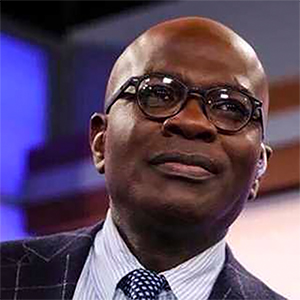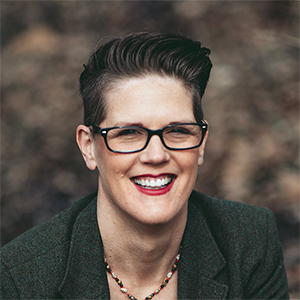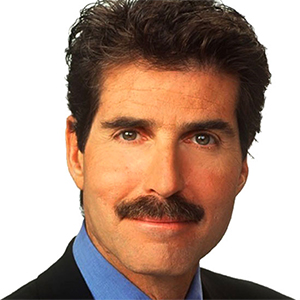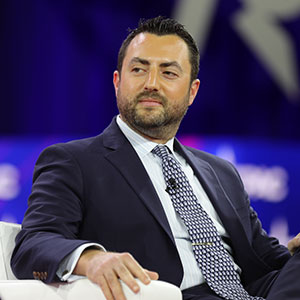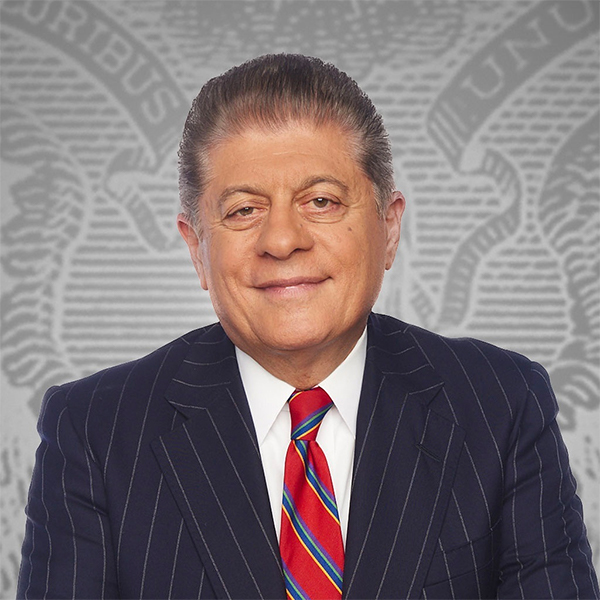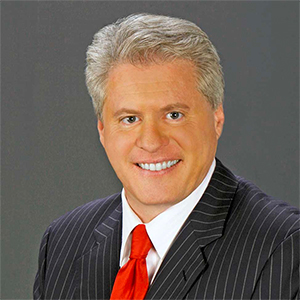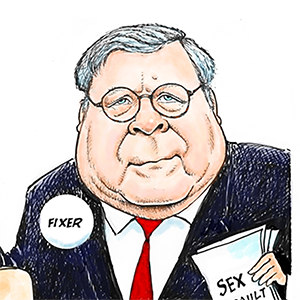Politics
/ArcaMax

Commentary: What Democrats can learn from the British left under Margaret Thatcher
U.S. politics this coming year will be defined by the midterm elections, and if current trends continue, Democrats could take back Congress.
According to recent Marist polling, Democrats lead by 14 points on the national ballot question, while President Donald Trump’s approval rating is at a new low of 36%.
The question is whether, and how, ...Read more
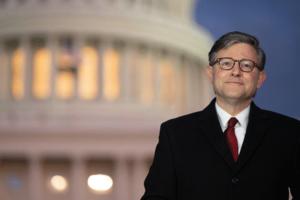
David M. Drucker: Johnson is an ironic target for Republicans
Mike Johnson, speaker of the House of Representatives, is under fire from all directions — from Democrats, naturally, but also from fellow Republicans angry with him for, well, just about everything.
My bill didn’t pass: Blame Johnson. My bill was ignored: Blame Johnson. The perennially broken appropriations process is still broken: Blame ...Read more
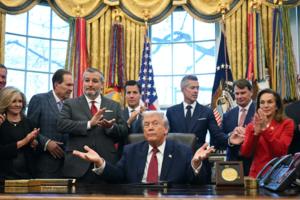
Abby McCloskey: What the GOP accomplished with all that power
“What a decade this year has been.” That’s how a friend in Washington described 2025 to me. The last 12 months saw a flurry of activity as Republicans in the White House and Congress worked to enact President Donald Trump’s agenda before he reaches “lame duck” status. The result was a swirling mix of policy highs and lows that — ...Read more

Commentary: Donald Trump is conducting a secret war
Covert operations are nothing new for the United States. Throughout its history, the U.S. has overthrown governments it didn’t like, supported insurgencies to complicate the goals of its adversaries and organized coups to subvert politicians perceived as being hostile to American interests.
The list of examples is long: to name just a few, ...Read more
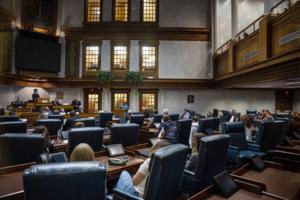
Editorial: Indiana puts mid-decade redistricting worries to bed. Good, now we can move on
We’ve been known to give Indiana a hard time, and rightly so over harebrained ideas such as aiding a portion of downstate Illinois in an effort to redraw state lines. Not so today.
Instead, we’d like to applaud the independence and fortitude shown by so many state lawmakers who stood up last Thursday against threats and intimidation. It’s...Read more

Commentary: What Democrats can learn from the British left under Margaret Thatcher
U.S. politics this coming year will be defined by the midterm elections, and if current trends continue, Democrats could take back Congress.
According to recent Marist polling, Democrats lead by 14 points on the national ballot question, while President Donald Trump’s approval rating is at a new low of 36%.
The question is whether, and how, ...Read more

Commentary: America needs even more billionaires fueled by the American Dream, not fewer
As New York Mayor-elect Zohran Mamdani’s inauguration looms, the wealthiest Americans are being targeted as a rallying cry. In recent weeks, Mamdani’s criticism of millionaires and billionaires has been echoed by Sen. Bernie Sanders, megamillionaire singer Billie Eilish, and even an entity called “Patriotic Millionaires,” which demands ...Read more

Editorial: Make federal minimum wage great again
Democrats may not have pulled off the political upset of the 21st century in the recent special election in Tennessee, but Republican Matt Van Epps’ single-digit margin of victory in a much-watched Seventh District congressional race should give his party pause.
The GOP candidate should have won by at least twice as much, given the district�...Read more

Commentary: Closing the labor-force gap is the only fix for the housing crisis
America’s housing crisis is no longer a looming threat: It’s here. Across the country, home prices and rents have climbed beyond reach for millions of families. While many factors play a role, from zoning laws to inflation, one root cause is often ignored: We simply don’t have enough construction workers to build the homes America needs.
...Read more

Editorial: A weekend of hatred hat tears at the soul
The heart-wrenching news over the weekend came in waves, a tsunami of senseless tragedy and calculated malevolence. Two dead and several others wounded in a mass shooting at Brown University in Rhode Island; two U.S. national guardsmen and an interpreter ambushed and murdered in Syria; 15 dead and 40 wounded after a terror attack in Australia ...Read more

Editorial: Lower housing prices, not loan standards
Philosopher George Santayana once famously observed, “Those who cannot remember the past are condemned to repeat it.” Unfortunately, our nation’s collective memory doesn’t seem to even extend back two decades.
Last month, Fannie Mae dropped the requirement that borrowers have a minimum credit score of 620. Freddie Mac had made a similar...Read more

Commentary: Only Los Angeles could spend $1.5 billion to make airport traffic worse
LOS ANGELES — When millions of people come to Los Angeles for the World Cup, Olympics and Paralympics, their first taste of the city will probably be the infuriating congestion of LAX. Now, do we want to treat our guests — and ultimately ourselves — to an even worse welcome: a half-finished, $1.5-billion roadway project at LAX that will ...Read more

Editorial: Bondi Beach. Brown University. The Reiners. A weekend of hellish violence
So which example of human carnage most deserved an editorial board’s focus this day?
Was it the antisemitic shooting incident at Bondi Beach in Australia, where a father-and-son team of assassins opened fire on what was supposed to be a fun celebration of the beginning of the Jewish festival of Hanukkah? There, at least 15 people died and ...Read more

Commentary: America's unnamed crisis
I first encountered Leszek Kołakowski, the Polish political thinker, as an undergraduate. It was he who warned of “an all-encompassing crisis” that societies can feel but cannot clearly name.
His insight reads less like a relic of the late 1970s and more like a dispatch from our own political moment. We aren’t living through one ...Read more

Commentary: States should reject federal school voucher scheme
Government officials and education experts are right to express concerns about recent evidence of declining academic achievement among the students who struggle most. Researchers are exploring potential reasons behind this decline, including pandemic-era learning loss and the negative effects of excessive screen time.
As the head of a public ...Read more

Editorial: After a weekend of mass shootings, Australia's leaders bolster gun laws while their US counterparts shrug
Two horrific mass shootings over the weekend offered a contrasting study in political leadership.
In Australia, after a father and son allegedly killed at least 15 people and injured more than two dozen others who gathered on a Sydney beach to celebrate the start of Hanukkah, Prime Minister Anthony Albanese called an emergency meeting and ...Read more

Nolan Finley: Reiner comments suggest Trump is losing his grip
It's pointless to expect Donald Trump to apologize for his reprehensible response to the murder of Hollywood actor/director Rob Reiner and his wife, Michele. Even though the American people deserve an apology, remorse is not in the president's repertoire.
Trump's horrid comments in the aftermath of the double homicide mark a new low for a ...Read more

Commentary: What happens to online discussion forums when AI is the first place people turn?
No doubt social media and online discussion forums have played an integral role in most everyone’s daily digital lives. Today, more than 70% of the U.S. adults use social media, and over 5 billion people worldwide participate in online social platforms.
Discussion forums alone attract enormous engagement. Reddit has over 110 million daily ...Read more

Editorial: Guaranteed income requires steady funding. Illinois governments don't have it
Universal basic income, or UBI for short, first gained prominence as an idea from the perennial independent Andrew Yang, who championed this cause during his 2020 presidential run as not only a way to combat poverty, but as “human-centered capitalism.”
The appeal of guaranteed income is understandable, especially in an era of technological ...Read more

Steve Lopez: From Rob Reiner, a life of political activism driven by compassion. From Trump, a grave dance
Whether you sat across the table from him or across the aisle, Rob Reiner left no doubt about what he cared about and was willing to fight for.
I had lunch with him once at Pete's Cafe in downtown L.A., where he was far less interested in what was on his plate than what was on his mind. He was advocating for local investments in early childhood...Read more


